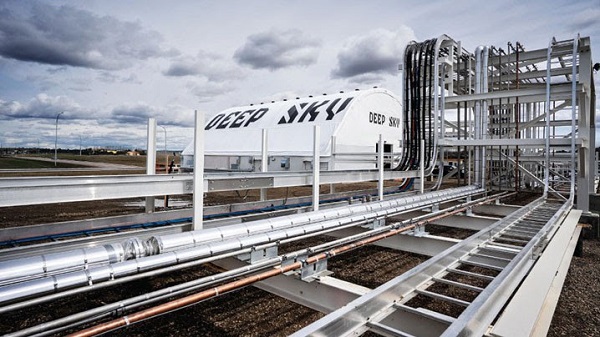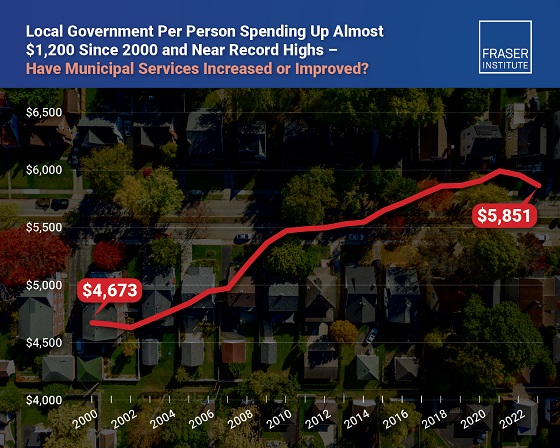Business
Will U.S. streaming companies play ball with the CRTC?: Peter Menzies

From the MacDonald Laurier Institute
By Peter Menzies
Domestic streamers have to live with the rules the CRTC comes up with, not so when it comes to global streamers
The fundamental weakness in Canada’s Online Streaming Act will be exposed for all to see on Nov. 20, when the Canadian Radio-television and Telecommunications Commission (CRTC) comes face-to-face with American streaming companies.
For the first time, the regulator will be dealing with companies that, if they don’t like the rules and the financial burden the CRTC imposes, are free to leave the country.
To be clear, neither Netflix, Disney+ nor any other company has yet suggested they are prepared to quit Canada. There have been no threats to do anything similar to what Meta did and Google might – stop carrying news – in response to the Online News Act. But there is nothing that compels foreign companies from continuing here if CRTC decisions make it no longer sensible for them to do so.
That shapes the conversation in a way that the commission, which commences a three-week-long hearing Nov. 20 involving 127 intervenors, isn’t accustomed to. Throughout its history, the primary players in CRTC procedures have always been captives of “the system” – domestic companies that depend for their existence on a commission license or rely upon the regulator’s decisions for their sustenance. They may not like the rules the CRTC comes up with, but they have to live with them.
Not so when it comes to global streamers that, as it turns out, are global.
Netflix’s base here is robust – 6.7 million subscribers – but that is just 10 per cent of its U.S. audience and only 2.8 per cent of its global subscriber base. According to its submission to the CRTC, it has already invested $3.5-billion in film and TV production since launching here in 2010 – roughly equivalent to the Canada Media Fund’s spend over the same period. And, it claims, people are 1.8 times more likely to view a Canadian production on Netflix than on TV. Let that sink in.
Disney+ makes similar arguments. It has 4.4 million Canadian subscribers out of a global total of about 147 million (down significantly this year). It points out that it has invested $1.5-billion in Canada, which is one of its top four production markets. As it gently states in its submission to the CRTC: “We encourage the commission to adopt a modernized contribution framework and a revised, modern definition of a ‘Canadian program’ that provide sufficient incentives for global producers and foreign online undertakings to continue to bring large-scale productions to, and make capital investments in, Canada.”
Large domestic companies that have been forced by regulation to contribute to the production and airing of certified Canadian content, meanwhile, argue for their “burden” in that regard to be reduced and shifted onto the backs of foreign companies.
In its submission, BCE Inc., which has a current profit margin of 21.2 per cent, describes the broadcasting system as in crisis, accuses streamers of having “contributed precious little to the Canadian system” and calls for its contributions to be reduced from 30 per cent to 20 per cent of the media division’s revenue – a figure it believes should be applied to all offshore streamers with more than $50-million in Canadian revenue.
BCE Inc. goes on to argue that if the commission takes its advice and forces the streamers to pay 20 per cent of their revenue directly into Canadian content funds, an additional $457-million – growing to $678-million by 2026 – will pour into the pockets of ACTRA, the Writers Guild and others involved in the creation of certified Canadian TV and film content.
And that, right there, is where Netflix, with a profit margin of 13 per cent clears its throat. Politely but firmly, it says the CRTC appears to have already made up its mind that streamers should be paying into funds and “submits that this is not an appropriate starting point.”
The decade prior to the introduction of the Online Streaming Act was by far the most prosperous in the history of the Canadian film and television industry, including in terms of Canadian content production.
Most of that growth took place beyond the reach of the CRTC, which was in charge of an increasingly irrelevant system upon which many legacy companies had grown dependent. But instead of fostering what was working, the government chose to sustain what wasn’t.
So now, as with the Online News Act, it’s playing at a table where it no longer holds all the cards.
Peter Menzies is a senior fellow with the Macdonald-Laurier Institute, a former publisher of the Calgary Herald and a previous vice-chair of the Canadian Radio-television and Telecommunications Commission (CRTC).
Alberta
Pierre Poilievre – Per Capita, Hardisty, Alberta Is the Most Important Little Town In Canada

From Pierre Poilievre
Business
Why it’s time to repeal the oil tanker ban on B.C.’s north coast

The Port of Prince Rupert on the north coast of British Columbia. Photo courtesy Prince Rupert Port Authority
From the Canadian Energy Centre
By Will Gibson
Moratorium does little to improve marine safety while sending the wrong message to energy investors
In 2019, Martha Hall Findlay, then-CEO of the Canada West Foundation, penned a strongly worded op-ed in the Globe and Mail calling the federal ban of oil tankers on B.C.’s northern coast “un-Canadian.”
Six years later, her opinion hasn’t changed.
“It was bad legislation and the government should get rid of it,” said Hall Findlay, now director of the University of Calgary’s School of Public Policy.
The moratorium, known as Bill C-48, banned vessels carrying more than 12,500 tonnes of oil from accessing northern B.C. ports.
Targeting products from one sector in one area does little to achieve the goal of overall improved marine transport safety, she said.
“There are risks associated with any kind of transportation with any goods, and not all of them are with oil tankers. All that singling out one part of one coast did was prevent more oil and gas from being produced that could be shipped off that coast,” she said.
Hall Findlay is a former Liberal MP who served as Suncor Energy’s chief sustainability officer before taking on her role at the University of Calgary.
She sees an opportunity to remove the tanker moratorium in light of changing attitudes about resource development across Canada and a new federal government that has publicly committed to delivering nation-building energy projects.
“There’s a greater recognition in large portions of the public across the country, not just Alberta and Saskatchewan, that Canada is too dependent on the United States as the only customer for our energy products,” she said.
“There are better alternatives to C-48, such as setting aside what are called Particularly Sensitive Sea Areas, which have been established in areas such as the Great Barrier Reef and the Galapagos Islands.”
The Business Council of British Columbia, which represents more than 200 companies, post-secondary institutions and industry associations, echoes Hall Findlay’s call for the tanker ban to be repealed.
“Comparable shipments face no such restrictions on the East Coast,” said Denise Mullen, the council’s director of environment, sustainability and Indigenous relations.
“This unfair treatment reinforces Canada’s over-reliance on the U.S. market, where Canadian oil is sold at a discount, by restricting access to Asia-Pacific markets.
“This results in billions in lost government revenues and reduced private investment at a time when our economy can least afford it.”
The ban on tanker traffic specifically in northern B.C. doesn’t make sense given Canada already has strong marine safety regulations in place, Mullen said.
Notably, completion of the Trans Mountain Pipeline expansion in 2024 also doubled marine spill response capacity on Canada’s West Coast. A $170 million investment added new equipment, personnel and response bases in the Salish Sea.
“The [C-48] moratorium adds little real protection while sending a damaging message to global investors,” she said.
“This undermines the confidence needed for long-term investment in critical trade-enabling infrastructure.”
Indigenous Resource Network executive director John Desjarlais senses there’s an openness to revisiting the issue for Indigenous communities.
“Sentiment has changed and evolved in the past six years,” he said.
“There are still concerns and trust that needs to be built. But there’s also a recognition that in addition to environmental impacts, [there are] consequences of not doing it in terms of an economic impact as well as the cascading socio-economic impacts.”
The ban effectively killed the proposed $16-billion Eagle Spirit project, an Indigenous-led pipeline that would have shipped oil from northern Alberta to a tidewater export terminal at Prince Rupert, B.C.
“When you have Indigenous participants who want to advance these projects, the moratorium needs to be revisited,” Desjarlais said.
He notes that in the six years since the tanker ban went into effect, there are growing partnerships between B.C. First Nations and the energy industry, including the Haisla Nation’s Cedar LNG project and the Nisga’a Nation’s Ksi Lisims LNG project.
This has deepened the trust that projects can mitigate risks while providing economic reconciliation and benefits to communities, Dejarlais said.
“Industry has come leaps and bounds in terms of working with First Nations,” he said.
“They are treating the rights of the communities they work with appropriately in terms of project risk and returns.”
Hall Findlay is cautiously optimistic that the tanker ban will be replaced by more appropriate legislation.
“I’m hoping that we see the revival of a federal government that brings pragmatism to governing the country,” she said.
“Repealing C-48 would be a sign of that happening.”
-

 Business2 days ago
Business2 days agoOttawa Funded the China Ferry Deal—Then Pretended to Oppose It
-

 COVID-192 days ago
COVID-192 days agoNew Peer-Reviewed Study Affirms COVID Vaccines Reduce Fertility
-

 MAiD2 days ago
MAiD2 days agoCanada’s euthanasia regime is not health care, but a death machine for the unwanted
-

 Business1 day ago
Business1 day agoWorld Economic Forum Aims to Repair Relations with Schwab
-

 Alberta2 days ago
Alberta2 days agoThe permanent CO2 storage site at the end of the Alberta Carbon Trunk Line is just getting started
-

 Alberta2 days ago
Alberta2 days agoAlberta’s government is investing $5 million to help launch the world’s first direct air capture centre at Innisfail
-

 Business2 days ago
Business2 days agoMunicipal government per-person spending in Canada hit near record levels
-

 Business1 day ago
Business1 day agoA new federal bureaucracy will not deliver the affordable housing Canadians need






